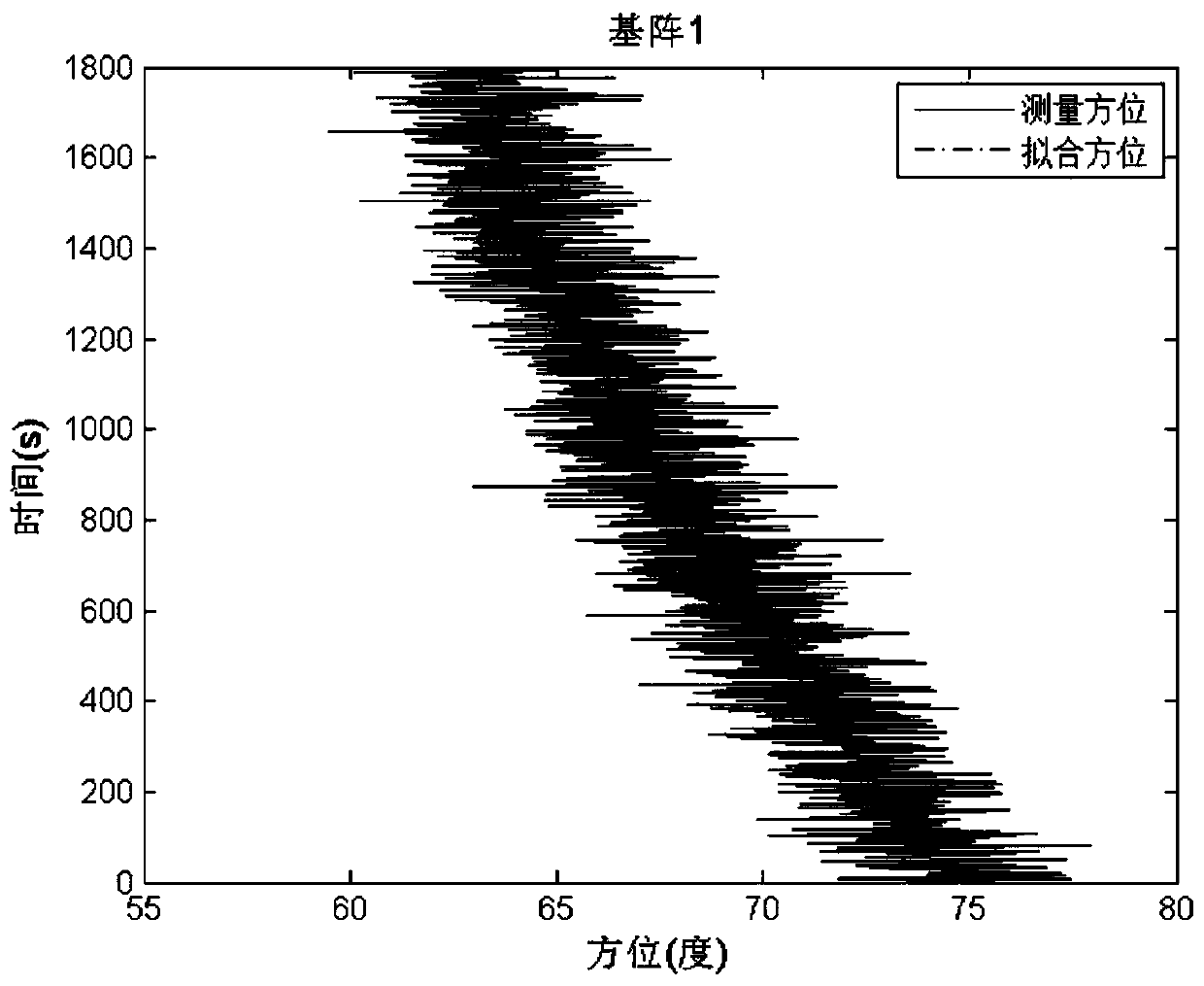Double-matrix target motion analysis method based on self-adaptive Kalman filtering
An adaptive Kalman and target motion analysis technology, applied to radio wave measurement systems, using re-radiation, measurement devices, etc., can solve problems such as divergence and inaccurate filtering, improve estimation accuracy, reduce convergence time, and improve performance Effect
- Summary
- Abstract
- Description
- Claims
- Application Information
AI Technical Summary
Problems solved by technology
Method used
Image
Examples
Embodiment
[0020] Embodiment: As shown in the accompanying drawing, this dual-array target motion analysis method based on adaptive Kalman filter mainly includes the following steps:
[0021] 1) Perform conventional beamforming on the synchronous acquisition signals of the dual arrays to obtain the target azimuth sequence θ 1 (k) and θ 2 (k), k=1,2,...,K;
[0022] 2) Respectively for the azimuth sequence θ 1 (k) and θ 2 (k) Perform outlier elimination and data smoothing to obtain the preprocessed orientation sequence θ p1 (k) and θ p2 (k), k=1,2,...,K;
[0023] 3) Set the state initial value X separately 0 , the initial value of state variance P 0 , the initial value Q of the state noise matrix 0 ;
[0024] 4) Calculate the variance of the difference sequence between the measured azimuth sequence and the preprocessed azimuth sequence, and set it as the initial value R of the observation noise covariance matrix 0 ;
[0025] 5) Adaptive Kalman filtering is performed on the prepr...
PUM
 Login to View More
Login to View More Abstract
Description
Claims
Application Information
 Login to View More
Login to View More - Generate Ideas
- Intellectual Property
- Life Sciences
- Materials
- Tech Scout
- Unparalleled Data Quality
- Higher Quality Content
- 60% Fewer Hallucinations
Browse by: Latest US Patents, China's latest patents, Technical Efficacy Thesaurus, Application Domain, Technology Topic, Popular Technical Reports.
© 2025 PatSnap. All rights reserved.Legal|Privacy policy|Modern Slavery Act Transparency Statement|Sitemap|About US| Contact US: help@patsnap.com



